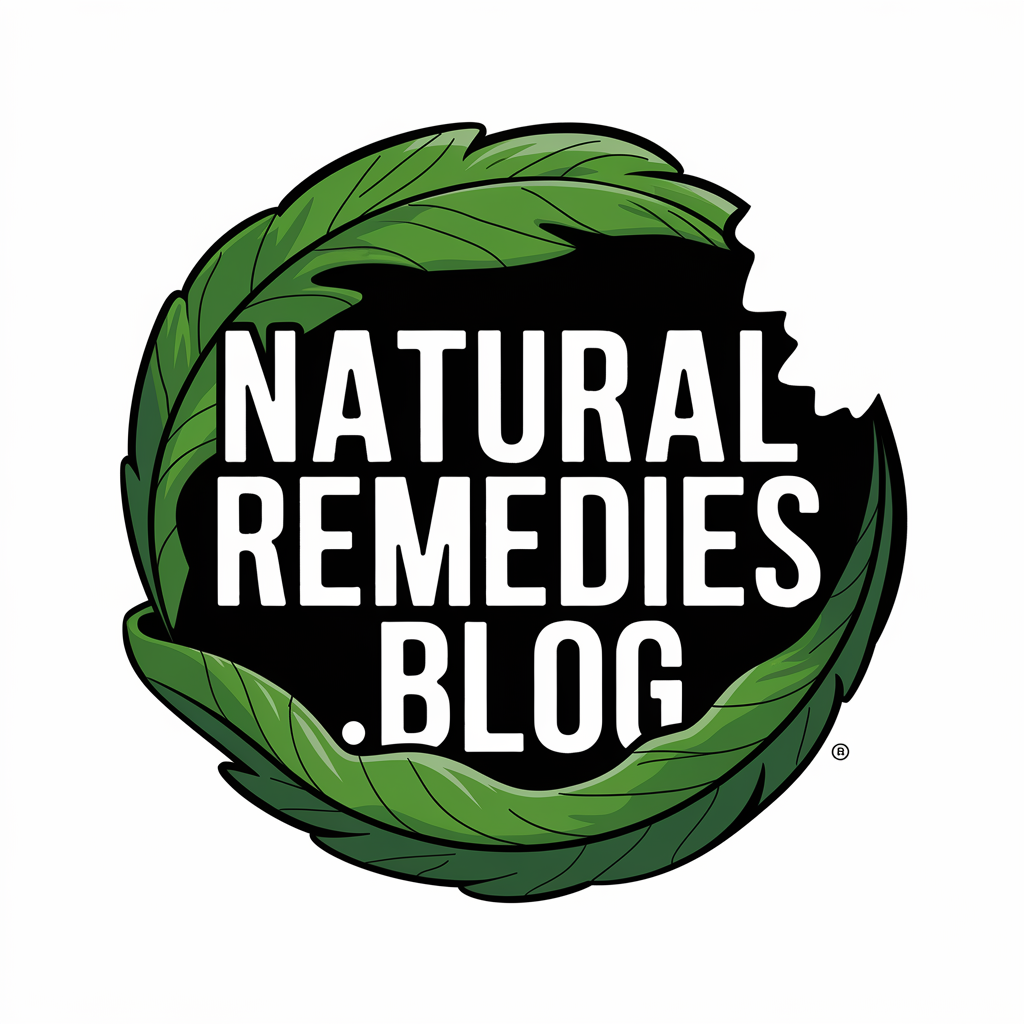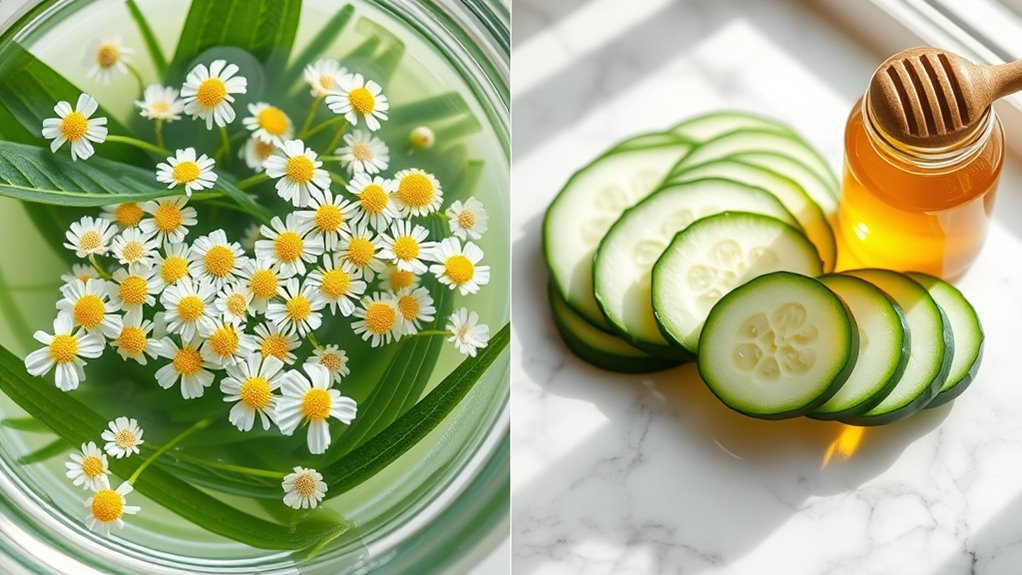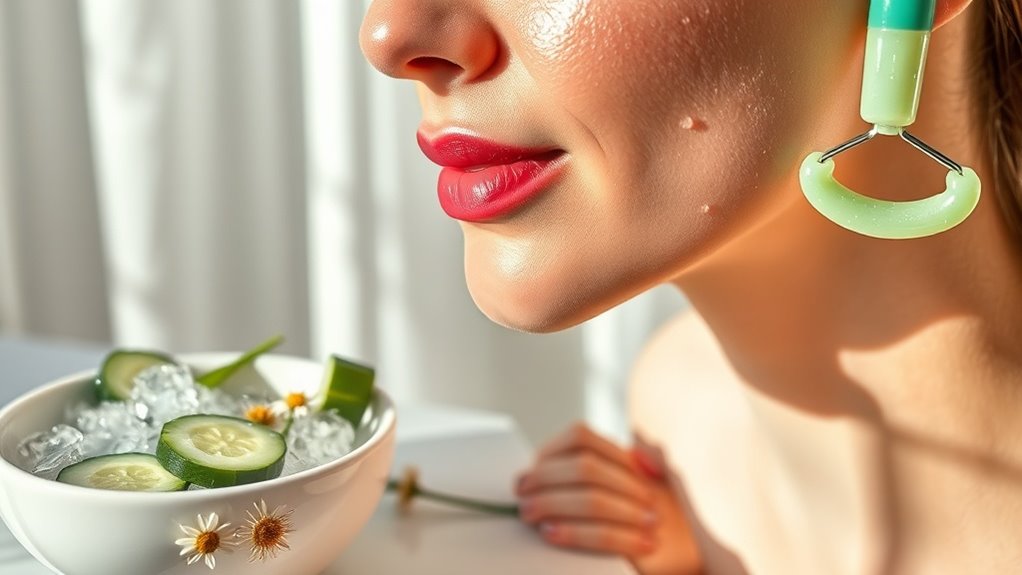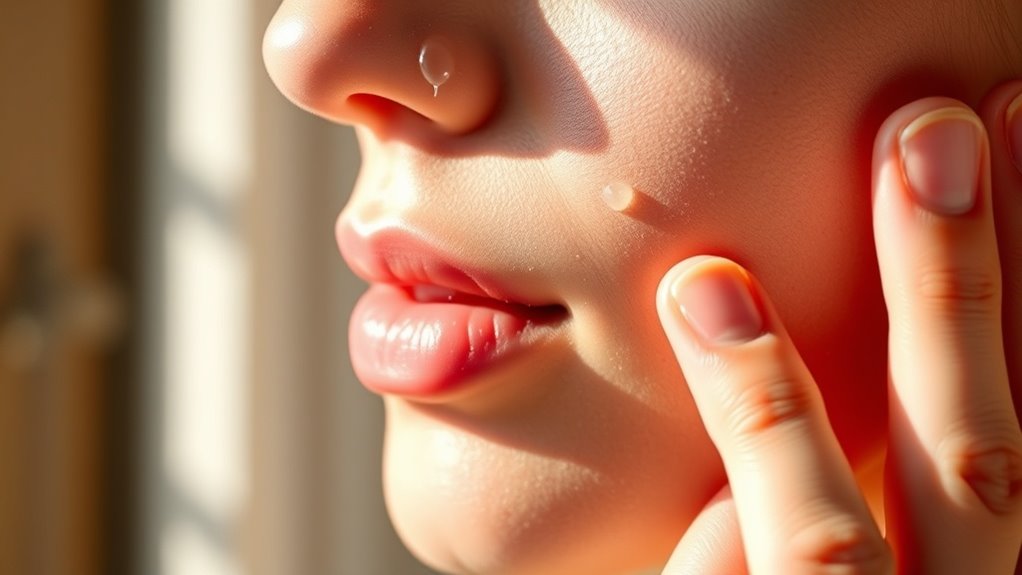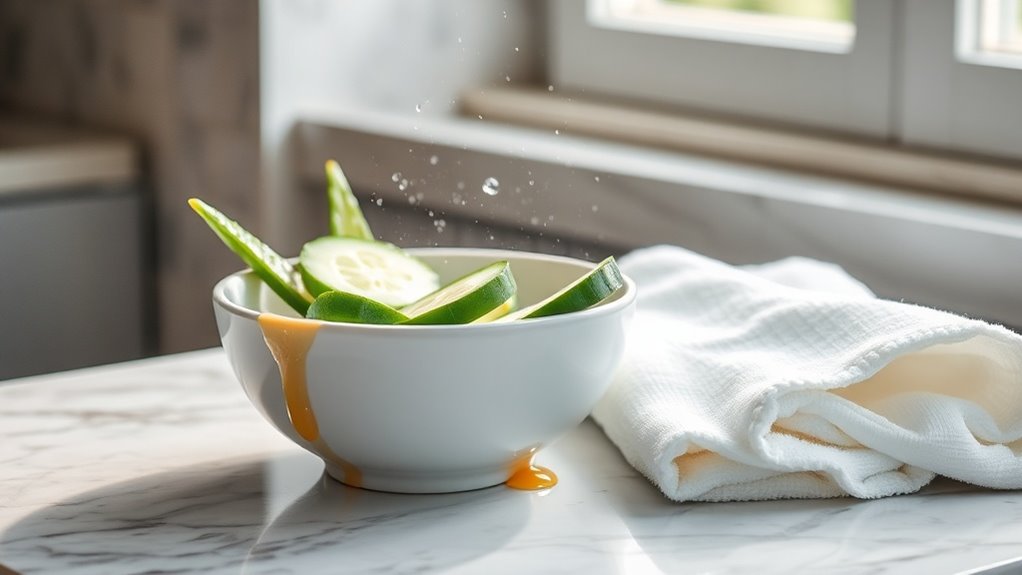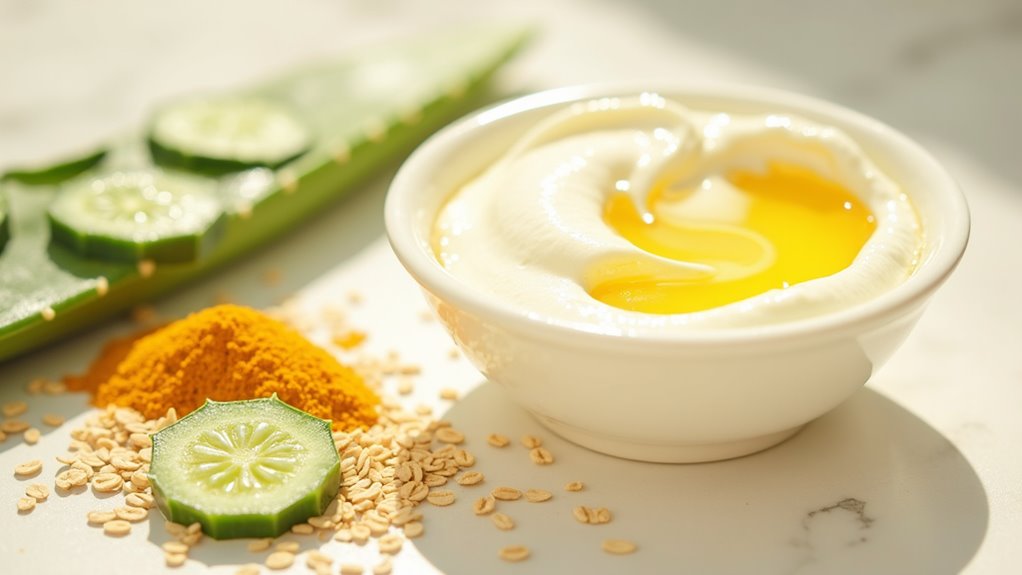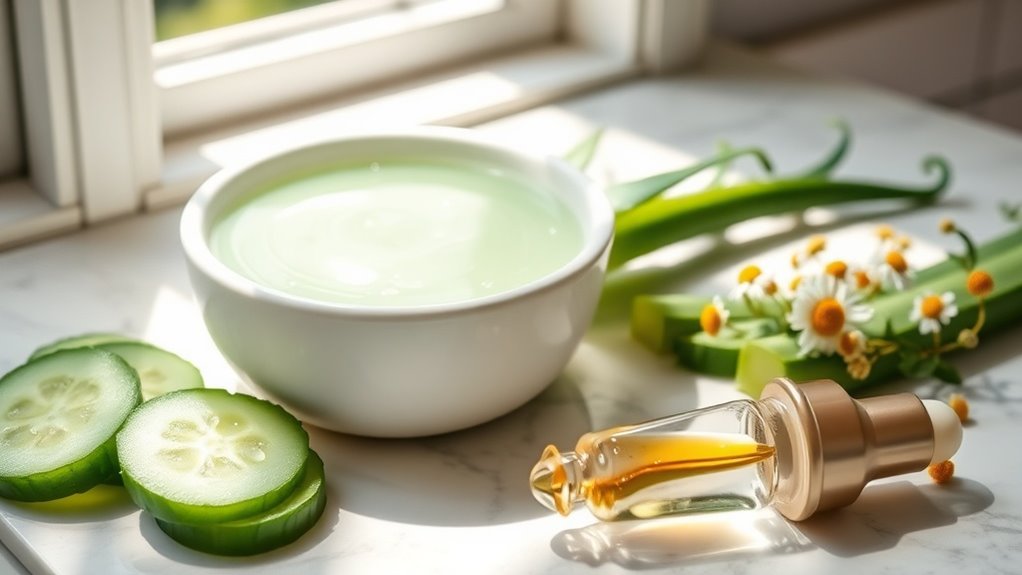My Secret to Calming Skin Redness Naturally
You can effectively calm skin redness by combining specific natural ingredients with mindful daily practices. Start with gentle cleansing using aloe vera or colloidal oatmeal, then apply anti-inflammatory botanicals like green tea, chamomile, or diluted tea tree oil. Incorporate stress-reduction techniques and sun protection while avoiding known irritants. For enhanced results, create custom masks using ingredients like honey, turmeric, and yogurt. Understanding the science behind these natural solutions will help optimize your skin-soothing journey.
Understanding the Root Causes of Skin Redness
Why does skin turn red? Your face and body can develop redness through several key mechanisms.
The most common causes include inflammatory conditions like rosacea and eczema, which trigger your immune system’s response. Baking soda can be a gentle skincare solution for soothing irritation associated with these conditions.
Environmental factors such as UV exposure, spicy foods, and temperature changes can dilate blood vessels, especially on your face.
Infections, whether bacterial, viral, or fungal, activate immune pathways leading to redness.
Chemical exposure can cause severe reactions, requiring immediate rinsing and removal of the irritating substance.
Before trying redness remedies, it’s essential to identify the underlying cause, as treatments vary greatly.
Some conditions require medical intervention, while others respond well to lifestyle modifications and targeted skincare.
Nature’s Most Powerful Anti-Inflammatory Ingredients
Once you’ve identified the source of your skin redness, nature offers powerful solutions through scientifically-validated ingredients.
Studies confirm that aloe vera’s amino acids and minerals effectively reduce inflammation while supporting your skin barrier. Additionally, using coconut oil’s properties can further enhance your skin’s protective barrier and provide deep nourishment.
Turmeric’s curcumin compounds provide potent anti-inflammatory benefits, particularly when combined with other soothing agents.
Colloidal oatmeal, FDA-approved for its protective properties, reduces inflammatory cytokines and calms irritation.
Natural oils rich in fatty acids promote barrier repair, while botanical extracts like calendula and chamomile contain specific compounds that target inflammation pathways.
Niacinamide, a vitamin B3 derivative, helps achieve a dewy skin glow while reducing inflammation.
These ingredients work synergistically to address redness through multiple mechanisms.
Essential Oils That Transform Irritated Skin
Essential oils have emerged as powerful natural remedies for transforming irritated skin through their unique biochemical properties.
Lavender and tea tree oils lead the pack with their dual anti-inflammatory and antimicrobial effects, effectively reducing redness while fighting infection. As demonstrated in scientific studies, tea tree oil shows consistently positive results for treating inflammatory skin conditions with fewer side effects than conventional treatments. Additionally, back acne can be effectively alleviated with the consistent application of tea tree oil due to its antibacterial properties.
Chamomile and frankincense oils provide additional anti-inflammatory support, while geranium helps balance skin conditions.
For specific concerns, tea tree oil targets acne-causing bacteria, while copaiba and cedarwood reduce inflammation in eczema.
If you’re dealing with rosacea, consider tea tree or sea buckthorn oil to address Demodex mites.
Always dilute these potent oils properly to avoid potential irritation.
Creating Your Own Natural Skin-Calming Masks
While essential oils offer powerful benefits, creating your own natural skin-calming masks allows you to combine multiple therapeutic ingredients for enhanced results.
Mix oatmeal with honey and yogurt for a gentle, anti-inflammatory base. Baking soda’s natural exfoliant properties can also be beneficial when mixed in moderation.
Add aloe vera or cucumber for immediate cooling relief, then incorporate turmeric or green tea extract for antioxidant protection. For sensitive skin conditions, consider adding shea butter to nourish and protect your skin barrier.
You’ll achieve best results by applying your mask at room temperature and following with a ceramide-rich moisturizer.
Don’t forget to patch test new combinations and maintain consistent weekly applications to effectively reduce redness and strengthen your skin barrier.
Daily Habits That Minimize Facial Redness
Managing facial redness requires five fundamental daily habits that work together to calm and protect your skin.
First, cleanse your face twice daily with a mild, sensitive-skin cleanser, patting dry gently. Using anti-dandruff shampoo as a facial cleanser can help manage seborrheic dermatitis symptoms. Additionally, regular cleansing can help remove dead skin cells that contribute to skin irritation.
Second, apply broad-spectrum SPF 30+ sunscreen and reapply every two hours outdoors.
Third, maintain consistent hydration with fragrance-free moisturizers containing soothing ingredients like ceramides and glycerin.
Fourth, eliminate irritants by avoiding harsh exfoliants and testing new products carefully.
Finally, support your skin through lifestyle choices: manage stress, prioritize sleep, maintain a nutrient-rich diet, stay hydrated, and minimize pollutant exposure.
The Mind-Skin Connection: Managing Stress for Better Skin
Beyond daily skincare habits, your skin’s health deeply reflects your mental state through intricate physiological pathways. When you’re stressed, your body releases cortisol and other hormones that trigger inflammation, increased oil production, and compromised barrier function. Your skin actively participates through its own local HPA axis and peripheral nerve responses. Integrating AI-powered mental health tools can enhance your stress management techniques, further supporting skin health.
| Stress Response | Skin Impact |
|---|---|
| Cortisol surge | Increased inflammation |
| HPA axis activation | Impaired healing |
| Immune suppression | Vulnerability to infection |
| Sympathetic arousal | Enhanced redness |
Research shows that mind-body interventions like meditation and biofeedback can substantially improve skin conditions. By managing your stress through these evidence-based techniques, you’ll help regulate hormonal cascades and reduce inflammatory responses that contribute to facial redness.
Building Your Natural Skincare Routine
Successfully building a natural skincare routine requires understanding the delicate balance between effectiveness and gentleness.
Start by selecting 4-5 core products containing plant-based ingredients like vitamins, antioxidants, and essential oils that match your skin type. Incorporating products with natural antibacterial properties can also help prevent breakouts and promote a glowing complexion.
You’ll need to customize your approach based on whether you have oily, dry, or combination skin.
Maintain consistency in your daily routine while being mindful of potential allergens, as 90% of natural products can contain sensitizing ingredients.
Since “natural” products lack FDA regulation standards, be extra vigilant when choosing products that claim to be natural or clean.
Use tools like facial massagers to enhance product absorption, and complement your regimen with proper hydration and sun protection for best results.
References
- https://www.healthline.com/health/rosacea-natural-treatments
- https://www.medicalnewstoday.com/articles/rosacea-natural-treatments
- https://www.manhattandermatologistsnyc.com/rosacea-natural-treatment/
- https://www.healthline.com/health/home-remedies-for-rashes
- https://www.beautymed.ca/blog/10-home-remedies-to-get-rid-of-redness-on-face
- https://www.healthline.com/health/skin-redness
- https://www.niams.nih.gov/health-topics/rosacea
- https://www.aad.org/public/everyday-care/skin-care-secrets/face/facial-redness
- https://www.ncbi.nlm.nih.gov/books/NBK557574/
- https://www.webmd.com/skin-problems-and-treatments/causes-redness-skin
